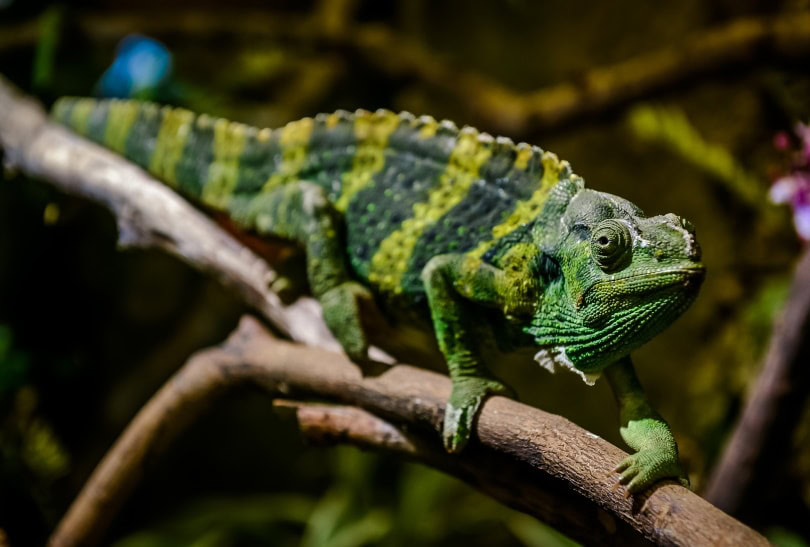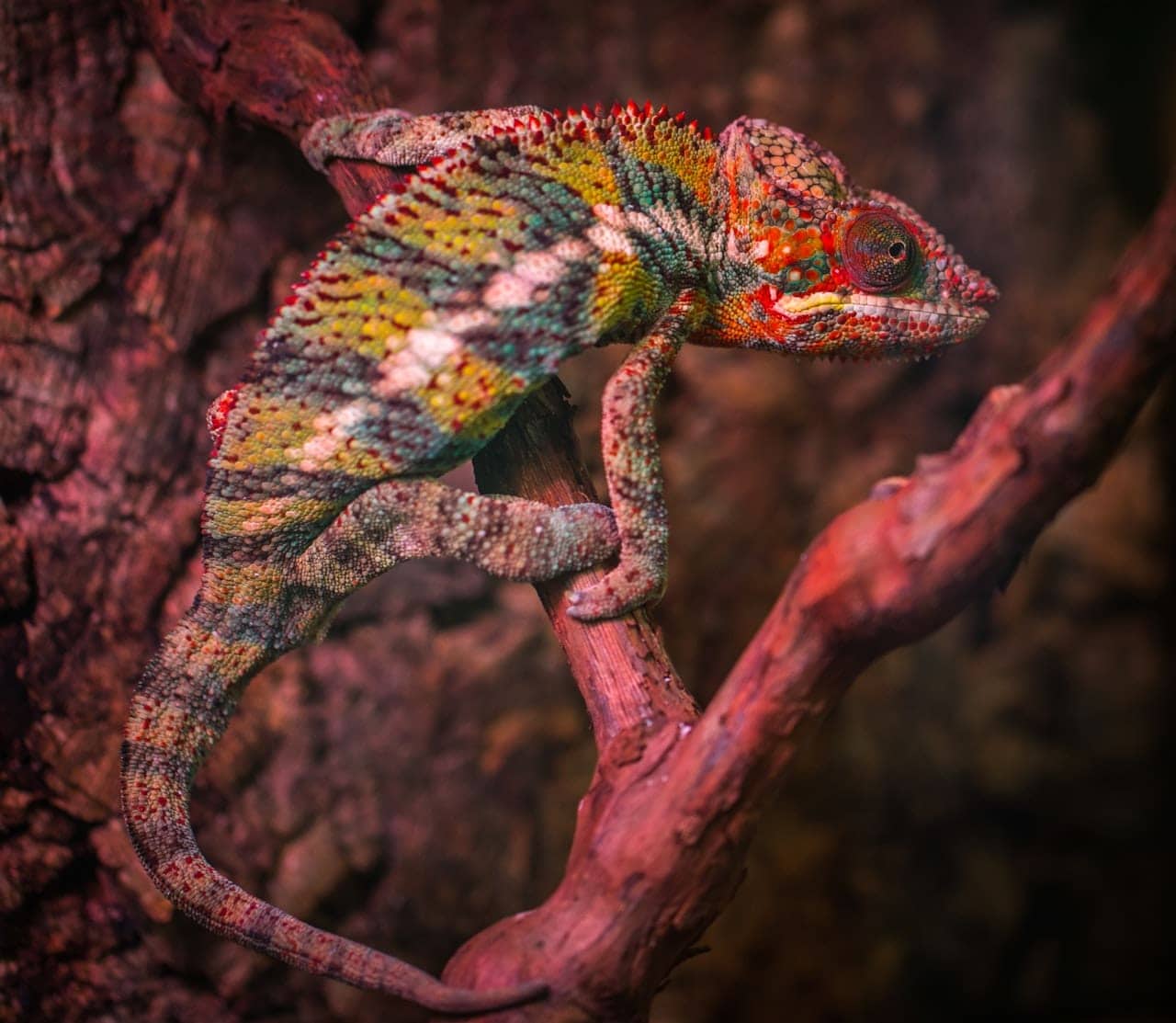VET APPROVED

The information is current and up-to-date in accordance with the latest veterinarian research.
Learn more »Chameleons are among the most captivating of lizards. They are best known for their ability to change colors and have become a popular choice of exotic pets. In addition to their striking ability to change color, they have a unique body shape, can move each limb independently, and catch prey by projecting their long, sticky tongue.
So, which chameleons change color? The answer is most (but not all) of them. Some chameleons don’t have a wide variety of color changes and tend to change from brown to green and back to brown. Some species, however, can turn a wide variety of vibrant colors.

The 10 Species of Chameleon With the Most Drastic Color Changes
With most species of chameleons changing colors from various hues of greens and browns, there are some species that display more drastic, alluring color-changing capabilities.
Below is a list of some of the most vibrant chameleons in both pattern and color:
1. Panther Chameleon (Furcifer pardalis)
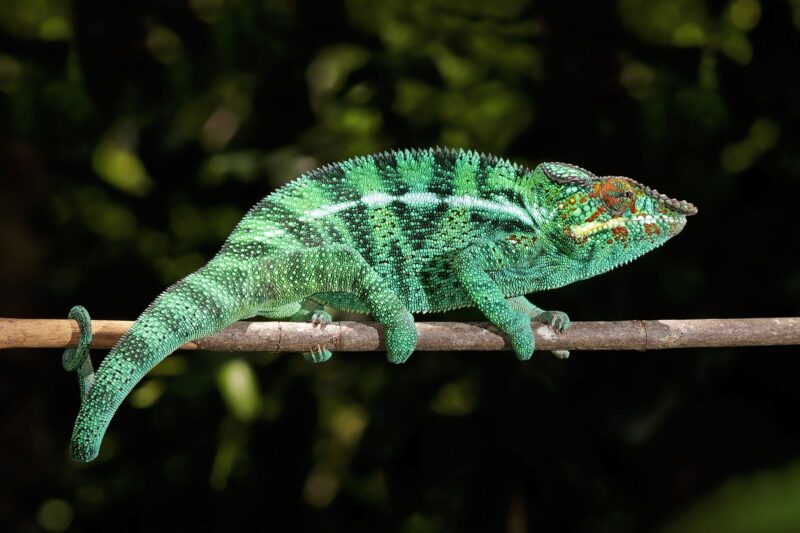
The panther chameleon is a species of chameleon found in the eastern and northern areas of Madagascar. This is one of the most popular pet chameleons (particularly in the US).
The panther chameleon is most well-known for two reasons. The first is that males are the “flashier” sex and display the most color variation. The second is that the male’s color varies with their native location.
The different color patterns of panther chameleons are commonly referred to as “locales,” which are named after the geographical location in which they are found. The following colors are most commonly attributed to males of the following locales
- From Nosy Be, Ankify, and Ambanja – Vibrant blue colors
- From Ambilobe, Antsiranana, and Sambava – Red, green, or orange
- From Maroantsetra and Tamatave – Primarily red
Specimens living between these regions can also have different overlapping colors. Females of this species often appear tan and brown with hints of pink, peach, or bright orange (regardless of their locale). Perhaps not surprisingly, this stark difference has made males more popular as pets.
2. Cape Dwarf Chameleon (Bradypodion pumilum)
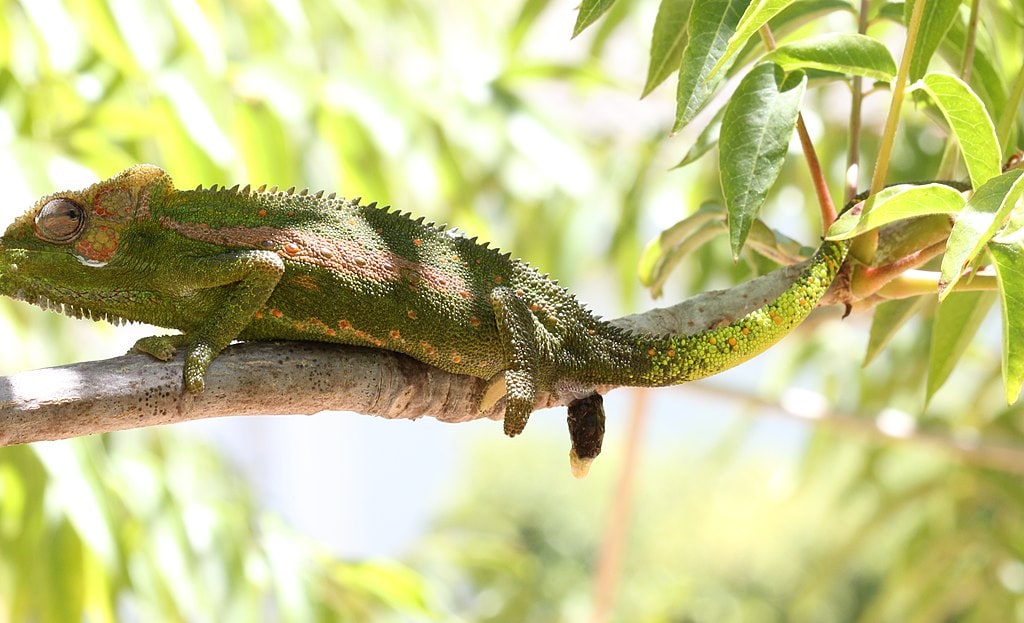
The Cape dwarf chameleon is a chameleon native to the South African province of the Western Cape. Cape dwarf chameleons are mostly green with orange lateral markings on their body and head. Being classified as “Near Threatened,” this species is not commonly seen as a pet.
3. Carpet Chameleon (Furcifer lateralis)
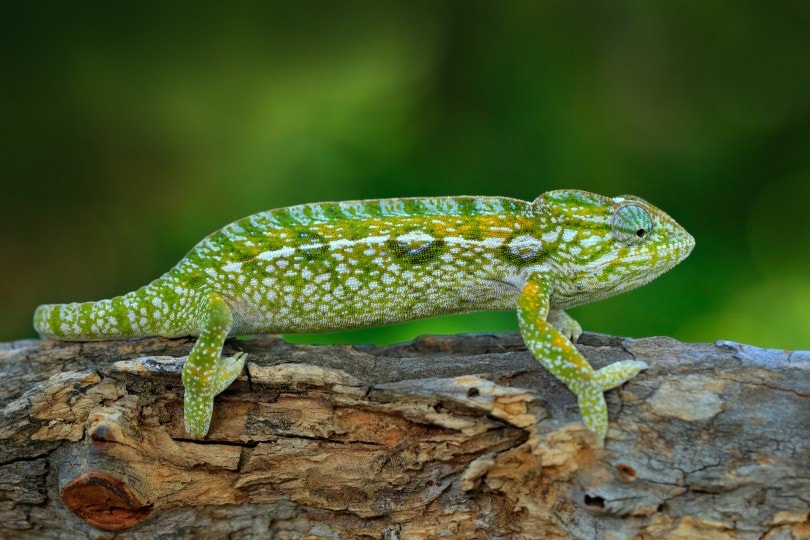
The carpet chameleon hails from the woodlands of Madagascar. They are highly regarded as pets for their striking coloration. It has been said that their name comes from their resemblance to an intricately woven oriental carpet.
They have either a green or tan base but when in full coloration they can display patterns of green, white, yellow, orange, red, and even lavender-colored spots. Males tend to display more of a vibrant, lime-green base.
4. Knysna Dwarf Chameleon (Bradypodion damaranum)
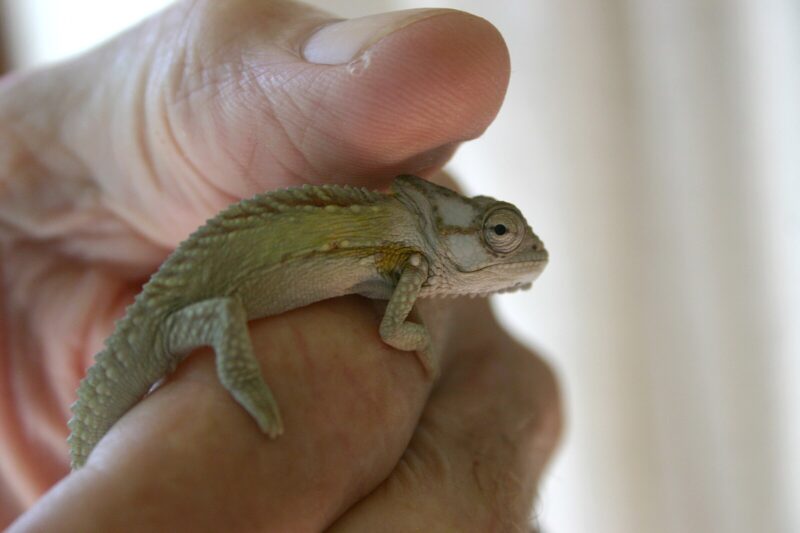
The Knysna dwarf chameleon is a species of dwarf chameleon endemic to South Africa. It is a forest dweller, found only in a limited range surrounding the forests near Knysna, South Africa. This chameleon has a prominent casque and bright green to bluish skin. Their coloration can include purple, yellow, and pink hues. They are perhaps best known for their small size, as shown in the photo above.
5. Labord’s Chameleon (Furcifer labordi)
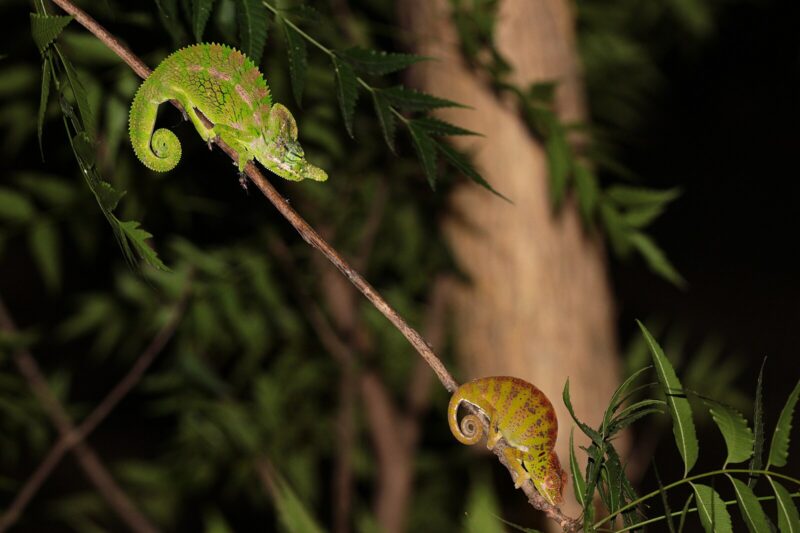
Native to Madagascar, the Labord’s chameleon is considered one of the shortest-lived vertebrates. Unlike most species of chameleon, the female’s coloration is often described as more vibrant than the male’s. In the photograph above, the male is higher up on the branch. The colorful female is lower.
This species is considered vulnerable and at risk of extinction if circumstances surrounding their decline are not addressed soon. As such, they are generally not considered ethically appropriate to be kept as pets.
6. Meller’s Chameleon (Trioceros melleri)
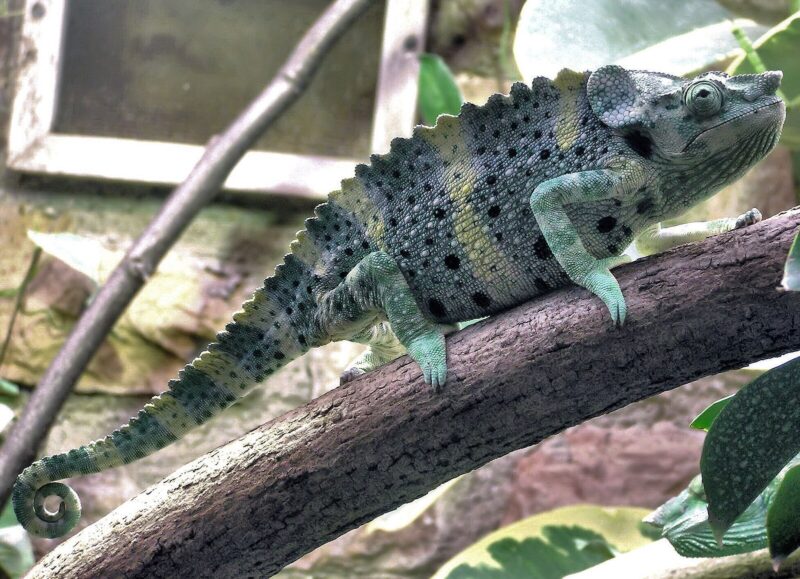
Also known as the giant one-horned chameleon, this is the largest species of chameleon hailing from Africa’s mainland. Meller’s chameleons will change color to communicate with others and as a stress response. Their normal appearance is a deep green base that is frequently marked with yellow stripes and black spots.
7. Minor Chameleon (Furcifer minor)
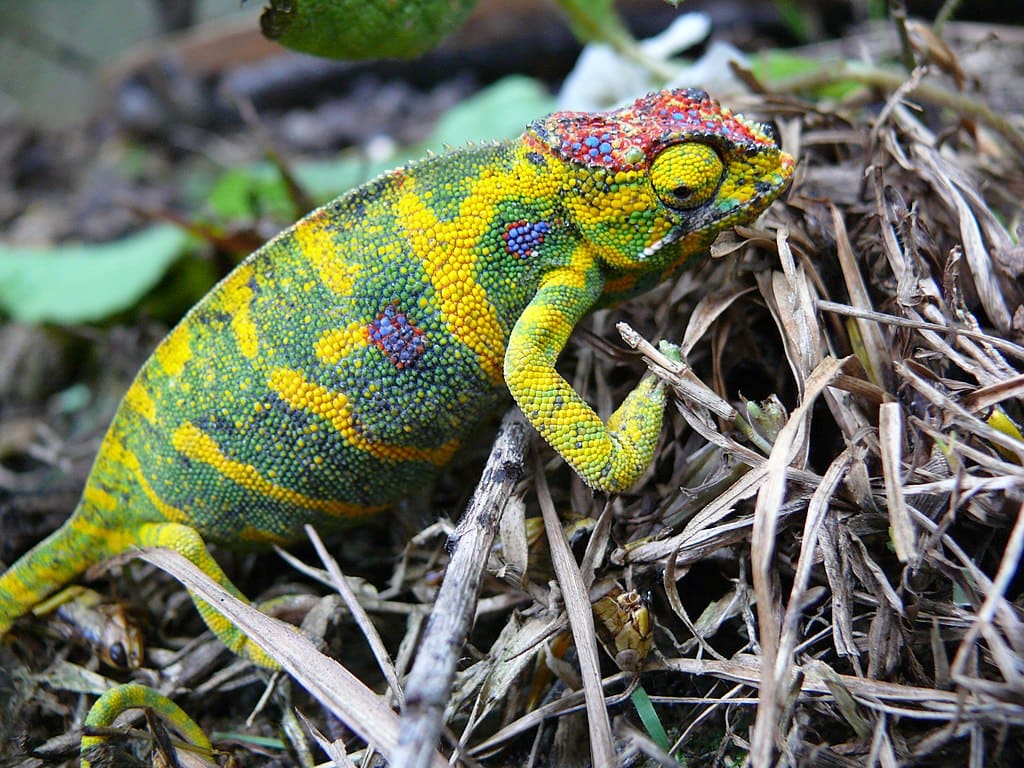
The Minor chameleon is another example of the few species of chameleon where the females have brighter colors (the photograph above shows a female). These chameleons are endangered and banned from being exported out of Madagascar.
8. Parson’s Chameleon (Calumma parsonii)
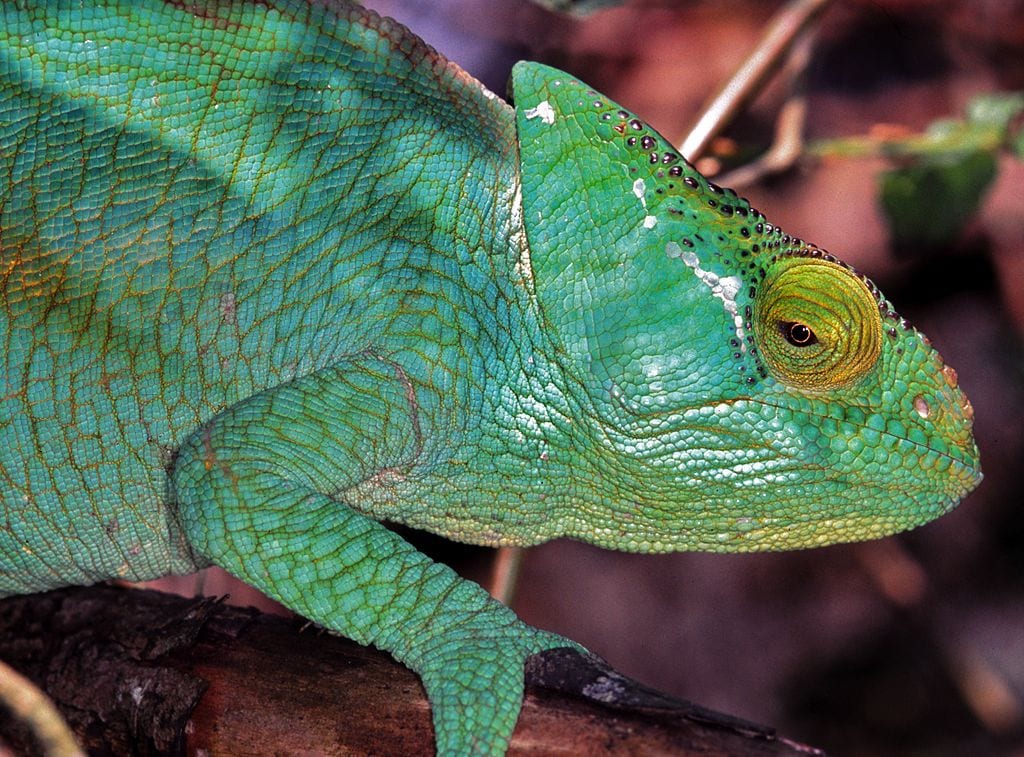
The Parson’s chameleon is a larger species of chameleon, native to the humid forests of northern and eastern Madagascar. Parson’s chameleons stand out with their larger nasal appendages that look gar-like. Parson’s chameleons have a green base and striking orange eyes.
9. Veiled Chameleon (Chamaeleo calyptratus)
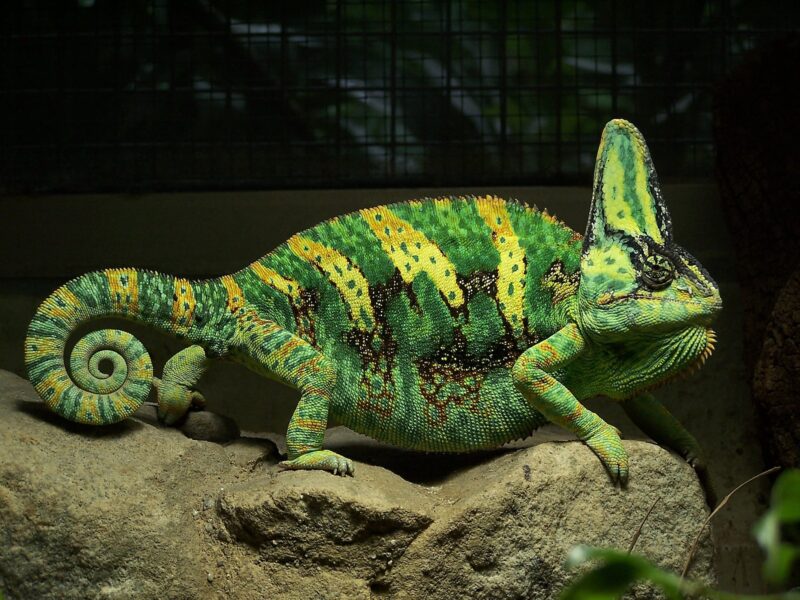
Veiled chameleons are native to the Arabian Peninsula in Yemen and Saudi Arabia. Also referred to as the cone-head chameleon and Yemen chameleon, they are a very popular species kept as pets. They have a distinct bony protrusion on top of the head called a casque.
They are naturally green with the ability to lighten or darken the hues. They can also display red, brown, blue, and yellow colors.
10. Verrucosus Chameleon (Furcifer verrucosus)

Also known as the warty chameleon, spiny chameleon, or crocodile chameleon, this species is native to Madagascar and has distinct, enlarged scales on their bodies. Males are commonly grayish-brown in color but change to a bright turquoise and vibrant green. A white lateral stripe is displayed when they become stressed.

How Do Chameleons Change Color and Why?
The color-changing aspect of the chameleon is quite interesting. Their skin has a superficial layer that contains pigments. Under that superficial layer are cells with guanine crystals. Chameleons change their color by changing the space between the guanine crystals. When the space changes, the wavelength of light reflected off the crystals changes the colors of the skin.
Scientists have learned that chameleons can tune into the distances between the crystals in their skin that reflect the light. This process creates a variety of colors that make them very popular.
Chameleons can quickly change their appearance in response to their surroundings, temperature, and mood. Adult males tend to change color more often, especially when they are trying to attract a mate or are in a territorial battle.
Some species can change color in less than 30 seconds but have much less variation, whereas others change slower but have a wider range of colors. Females and younger chameleons tend to often (but not always) have less drastic changes.

Conclusion
Chameleons can make for very interesting pets that are striking to look at. Not all chameleons display drastic color changes, but some species have the incredible capability of reflecting various colors.
Any potential owner will want to look up the care requirements of pet chameleons. You will need to take a look at how they live their lives and do your best to replicate that in their non-natural enclosure. They are high-maintenance pets that do not enjoy human interaction and are best observed in their enclosure.
Featured Image Credit: Alex Tihonovs, Shutterstock
Contents
- The 10 Species of Chameleon With the Most Drastic Color Changes
- 1. Panther Chameleon (Furcifer pardalis)
- 2. Cape Dwarf Chameleon (Bradypodion pumilum)
- 3. Carpet Chameleon (Furcifer lateralis)
- 4. Knysna Dwarf Chameleon (Bradypodion damaranum)
- 5. Labord’s Chameleon (Furcifer labordi)
- 6. Meller’s Chameleon (Trioceros melleri)
- 7. Minor Chameleon (Furcifer minor)
- 8. Parson’s Chameleon (Calumma parsonii)
- 9. Veiled Chameleon (Chamaeleo calyptratus)
- 10. Verrucosus Chameleon (Furcifer verrucosus)
- How Do Chameleons Change Color and Why?
- Conclusion
